
10 steps for the employee offboarding process

Table of Contents
- What is Employee Offboarding?
- Steps for Effective Employee Offboarding Process
- 1: Resignation Notification and Notice Period
- 2: Clearance Process
- 3: Return of Company Assets
- 4: Protection of Intellectual Property
- 5: Documentation and Agreement
- 6: Clearing Outstanding Loan and Tax Details
- 7: Recruitment and On-boarding
- 8: Knowledge Transfer
- 9: Ongoing Communication
- 10: Employee Feedback and Reflection
- How Helpful is the Employee Exit Process to HR Teams?
- 1: Operational Efficiency
- 2: Insights for Talent Retention
- 3: Legal Compliance
- 4: Knowledge and Succession Planning
- 5: Company Culture and Reputation
- Conclusion
- Contact DevProvider
In today’s digital era, employee offboarding presents new dimensions and challenges. As technology continues to shape the way we work, organizations must adapt their offboarding processes to ensure smooth transitions and maintain positive relationships. At DevProvider, we recognize the changing environment and have developed a modern approach to employee offboarding that addresses the specific needs of the digital era.
We use technology to maintain open and clear communication with employees who are leaving, regardless of their location. We also ensure the security of their data by following IT and access management protocols. Through online platforms, we encourage former employees to stay connected and provide opportunities for future collaborations. We offer ongoing support and organize virtual events to sustain a positive company culture.
These steps ensure we manage the employee’s departure professionally and address any potential legal issues properly. Additionally, we provide a letter of recommendation to help the employee find their next job quickly and easily.
What is Employee Offboarding?
Employee offboarding is the process a company follows when an employee leaves their job. It involves various steps to ensure a smooth transition for both the employee and the company. During offboarding, the company acknowledges the employee’s resignation, transfers their knowledge to others, manages their access to company systems and information, and collects feedback from them before they leave. The goal is to end on good terms, avoid problems, keep important information safe, and maintain the company’s reputation and culture.
Why is Offboarding Important?
The offboarding experience is important for various reasons
- Closure and Knowledge Transfer: Offboarding allows employees to gain closure on their time with the company. They can transfer their knowledge and expertise to the remaining staff, ensuring a smooth transition and minimizing disruptions in workflow.
- Positive Reputation and Recommendations: Ensuring smooth feedback and task handover makes the company look good, increasing the chances that departing employees will speak highly of it to others.
- Potential Return: It keeps the door open for former employees who might want to come back in the future.
- Data and Asset Protection: Offboarding ensures that departing employees return company property and lose access to sensitive information, protecting the company’s data and assets.
- Maintaining Company Culture: By showing respect and appreciation for departing employees, offboarding contributes to a positive company culture, which can boost morale among the remaining staff.
- Legal Compliance: Effective offboarding ensures that all legal requirements and contractual obligations are met, reducing the risk of legal issues or disputes.
Steps for Effective Employee Offboarding Process
To guarantee a smooth transition and keep a positive company culture during offboarding, it’s important to have a structured plan. By following these Ten key steps, you can effectively handle the offboarding process and reduce any potential problems.
1: Resignation Notification and Notice Period
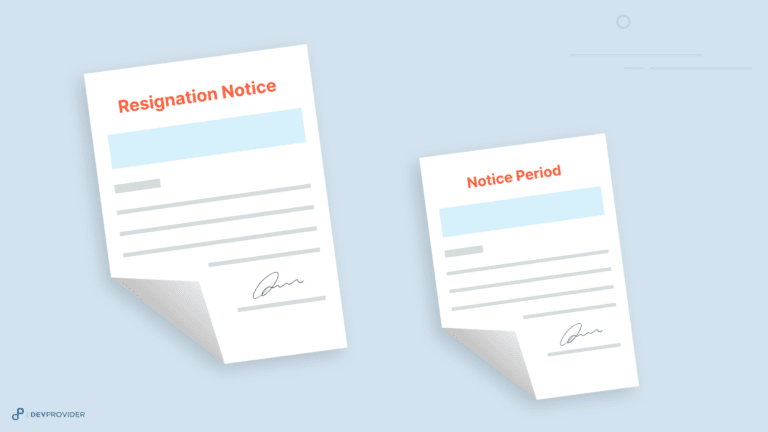
When an employee expresses their intent to resign, we facilitate a smooth clearance process. The employee is required to provide written notification of their resignation, allowing the department to work with payroll for timely final separation payment. In most cases, a one-month notice period is considered appropriate, although during the probation period, this notice period may be skipped.
2: Clearance Process
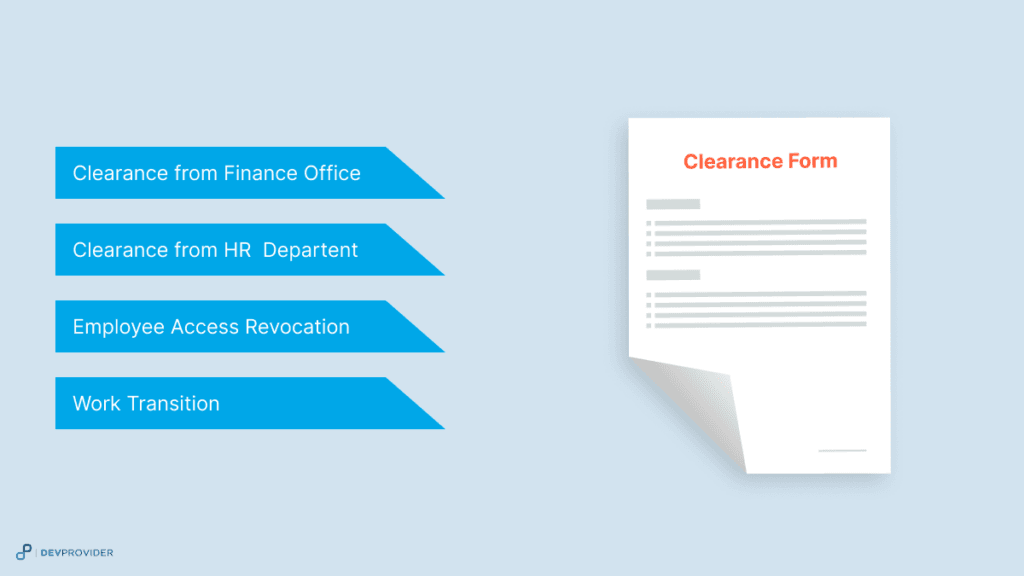
To ensure a smooth exit, the employee is required to obtain clearance from various management teams, such as finance and HR, regarding their paychecks and any pending obligations. Additionally, the employee may be asked to sign an employee clearance letter to confirm that all company-related matters have been resolved.
3: Return of Company Assets
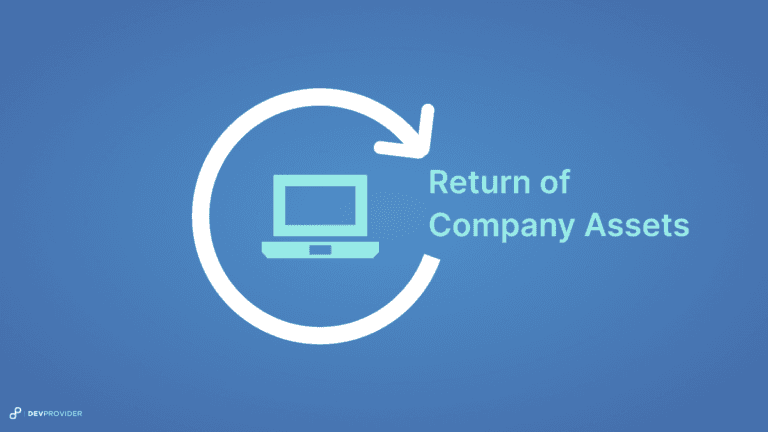
If the employee has been provided with company assets, such as a laptop, they are required to return all assets to the admin during the notice period.
4: Protection of Intellectual Property
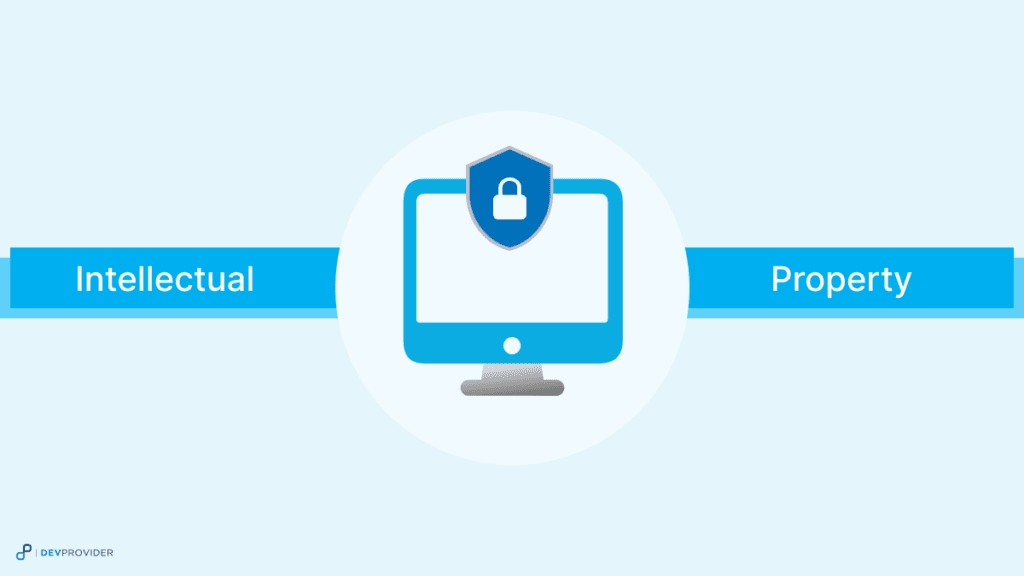
To protect the company’s intellectual property, the employee is required to submit their logins for company accounts, such as GitHub and Skype, before leaving. This ensures that the company’s property can be disposed of or closed appropriately.
5: Documentation and Agreement
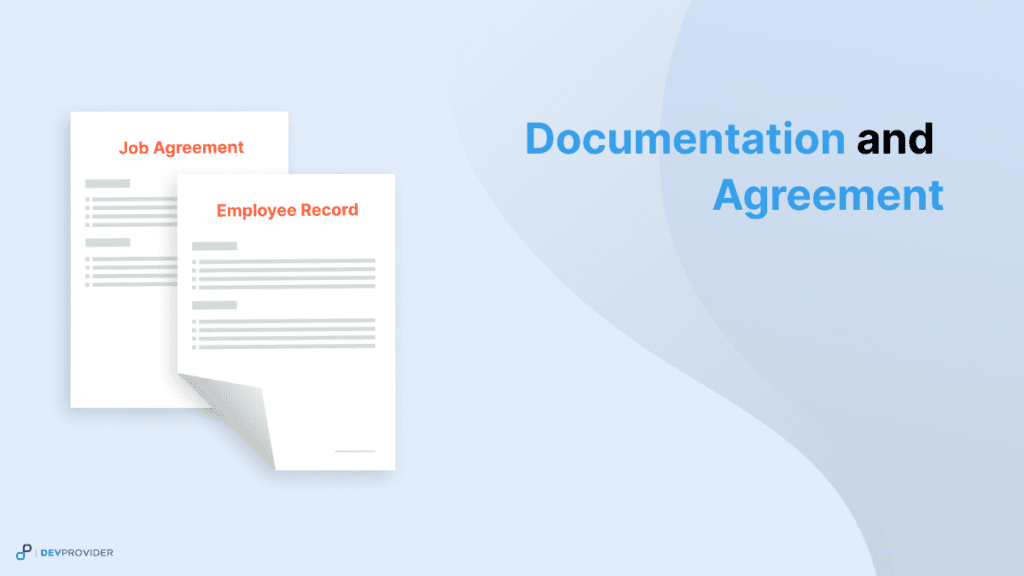
HR teams need to handle various paperwork and documentation during the offboarding process. This includes updating employee records, processing final paychecks, organizing benefits termination, and collecting any company property. This ensures that all parties have a shared understanding of the agreed-upon solutions and minimizes the chances of future disputes
6: Clearing Outstanding Loan and Tax Details
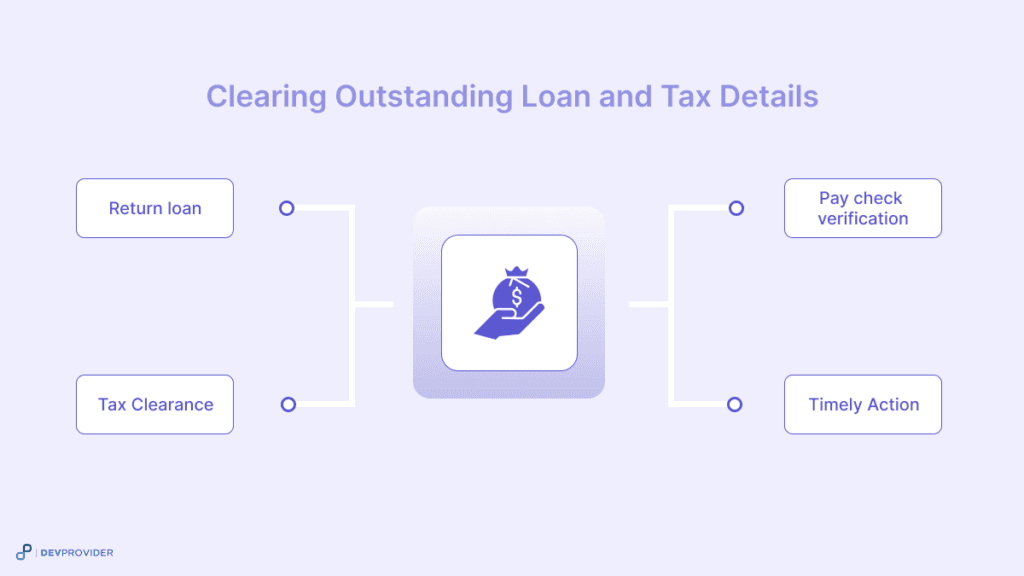
Clearing any outstanding loan and tax details is important before leaving the company. The employee should clarify these matters and is allowed to request any necessary information within three months after leaving. After this period, no further information will be provided.
7: Recruitment and On-boarding
During offboarding, our HR team starts looking for a new person to fill the open position. They find suitable candidates, interview them, and choose someone who can easily fit in with the team. The employee who is leaving will also train the new person to help them transition smoothly. We carefully plan the onboarding process for the new hire to match the time when the departing employee is still here, We make sure that the change from one employee to another happens smoothly and without any problems.
8: Knowledge Transfer
At DevProvider, we know it’s important to gather and share the knowledge of employees before they leave. We have a system in place to collect important information, processes, and helpful tips from departing employees. We then pass this knowledge on to the right people or their replacements so that work can continue smoothly. By focusing on sharing knowledge, we make sure that when someone leaves, it doesn’t cause problems and our company keeps performing well.
9: Ongoing Communication
Throughout the notice period, we maintain open and transparent communication with all parties involved. Regular check-ins, progress updates, and team meetings are conducted to address any challenges, provide feedback, and foster a collaborative environment.
10: Employee Feedback and Reflection
At DevProvider, we believe in always getting better and valuing what our employees have to say. As part of our process when employees leave, we have introduced a Questionnaire form that they can fill out on their last day of work. This helps us learn important things like how they felt overall, ideas for making things better, and feedback about their specific job and teams. By actively asking for their input, we want to make DevProvider even better and make smart choices to bring positive changes to our company.
Related: wants to read about Steps for hiring remote developers
How Helpful is the Employee Exit Process to HR Teams?
The employee exit process is highly beneficial for HR teams, offering valuable support in the following ways:
1: Operational Efficiency
By creating a well-organized exit process, HR teams can make their work smoother and ensure that all important tasks are done efficiently. This helps to avoid mistakes or delays in completing important offboarding activities.
2: Insights for Talent Retention
Exit interviews give HR teams helpful information about how satisfied employees are, why they are leaving, and what areas need improvement. This helps HR understand common issues, address concerns, and come up with plans to keep more employees happy and improve the company’s overall performance.
3: Legal Compliance
Having a clear exit process helps HR teams follow the law when employees leave the company. This includes tasks like giving them their final paycheck, ending their benefits, and meeting other legal requirements. By doing things the right way, HR teams reduce the chance of legal problems and make sure they follow all the rules that apply to employment.
4: Knowledge and Succession Planning
The exit process allows HR teams to capture and document valuable knowledge and insights from departing employees. This knowledge can be used for succession planning, ensuring a smooth transition of responsibilities and minimizing disruption to ongoing projects and operations.
5: Company Culture and Reputation
When a company handles the process of employees leaving in a good way, it shows that they care about keeping good relationships with those employees. HR teams contribute to creating a positive company culture by giving support and acting professionally during the offboarding process. This helps improve the company’s reputation as a place where people want to work because they know they will be treated well, even when they leave the company.
Overall, the employee exit process provides essential support to HR teams, enabling them to efficiently manage departures, gain valuable insights, ensure legal compliance, plan for knowledge transfer, and maintain a positive company image.
Conclusion
In conclusion, effective employee offboarding is crucial for modern organizations to navigate the complexities of today’s digital landscape and maintain positive relationships with departing employees.
At DevProvider, we recognize the importance of adapting offboarding processes to meet the evolving needs of the workforce, leveraging technology to facilitate smooth transitions and uphold our company culture. By following structured steps and embracing open communication, we ensure that departing employees leave on good terms, while HR teams benefit from operational efficiency, valuable insights, legal compliance, and enhanced company reputation. Through continuous improvement and a commitment to professionalism, we strive to create a supportive environment where all employees, whether joining or leaving, are valued and respected.
Contact DevProvider
Contact DevProvider today to embark on your journey towards remote web development success. We are committed to helping you harness the power of remote talent and propel your business to new heights.
If you have your own website dedicated to connecting businesses with remote web developers, feel free to share it with us by sending a message here.

